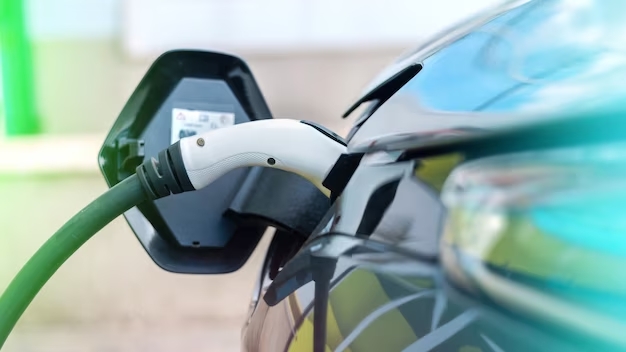The Year We Figure Out EV Charging Will Be 2024
Anxiety about range and charging makes many Americans reluctant to switch to electric cars. However, it is expected to change in 2024 when the majority of automakers adopt the same standard.

The landscape for electric cars is transforming faster than ever. In some places, like my neck of the woods in northern California, the charging infrastructure is a dream – reliable and abundant, making long trips a breeze. But I’ve been hearing a chorus of complaints from other parts of the country, especially the Midwest and southeastern US, about the scarcity of charging stations.
It’s a real concern, and studies back it up. People are keen on switching to electric vehicles, but the fear of not finding a charging spot is holding many back. Even current EV owners aren’t as satisfied with the charging options as they’d like to be.
The good news is that 2024 looks like a turning point. Big changes are in the works for both the electric car industry and charging infrastructure. It seems like America might finally be getting its act together when it comes to EV charging, both on the roads and at home. It’s about time!
The North American Charging Standard is the one plug that fits all plugs.
In the world of electric vehicles, a seismic shift has occurred with major players rallying behind the North American Charging Standard (NACS), pioneered by Tesla. Ford kickstarted the transition from CCS1 to NACS, triggering concern about confusion among EV users. However, the domino effect began when General Motors followed suit, and soon, a parade of automotive giants and newcomers embraced NACS. This swift industry-wide adoption laid the charging standard war to rest before it even ignited.
Now, the buzz is about the arrival of CCS-to-NACS adapters from Tesla, collaborating manufacturers, and third-party innovators like Lectron. These adapters, hitting the scene in 2024, will empower existing EV drivers to access the unparalleled Tesla Supercharger network alongside the widespread CCS1 stations, fostering a win-win situation for long-haul EV drivers. Imagine 12,000 Tesla Superchargers spanning the US and Canada, complementing the existing 10,000 CCS1 stations, all poised to expand further with new contenders stepping into the DC fast-charging arena. The future looks electric, unified, and promising for all drivers embracing this evolving charging landscape.
Let’s combine our abilities: EV automakers collaborate on a vast network of chargers.
Seven major automakers are teaming up to create a groundbreaking EV charging network in North America. This alliance, including BMW, GM, Honda, Hyundai, Kia, Mercedes-Benz, and Stellantis, plans to establish 30,000 DC fast-charging stations. What’s unique? They’re embracing both CCS and NACS standards, ensuring compatibility for all EVs. These stations, strategically placed near amenities, aim to minimize the 20 to 40-minute charge wait. The network launches in 2024, promising a seamless charging experience for all electric vehicle owners.
The petrol station’s retaliation
Germany mandates 80% of gas stations to install EV chargers while US stations gear up for EVs. BP invests $100M in Tesla chargers for BP Pulse, planning $1B for US charging by 2030. Buc-ee’s partners with Mercedes-Benz for 30 DC fast charging stations by 2024.
Gas stations, with their amenities and staff, are becoming EV charging havens, contrasting dark, empty lots. These charged-up spots promise a well-lit, serviced oasis for EV drivers. The road ahead is transforming, with gas stations leading the charge into an electrifying future.
The process of charging payment is made simpler
The National Electric Vehicle Infrastructure plan prioritizes contactless payment acceptance for EV charging. This means using any major credit or debit card, simplifying the process for all drivers. No more juggling multiple apps—just tap your card or phone to start charging, making it easier for both seasoned users and newcomers to access charging networks across the country.
Rethinking home charging
Infrastructure development is indeed a crucial piece of the puzzle for electric vehicles (EVs). However, encouraging new EV owners to charge at home is equally important to alleviate the strain on current public charging capacity.
Many EV manufacturers offer initial public charging credits with a new purchase, aiming to facilitate the EV transition while owners arrange their home charging setup. While this helps individuals, excessive free charging could lead to drivers camping at public stations near home for “free” energy, which isn’t sustainable. Tesla’s move away from “free unlimited Supercharger access for life” underscores this point, urging drivers to transition to home charging.
Some automakers, like Hyundai and Honda, have devised innovative approaches. Hyundai’s $1,100 incentive program provides an 11.5-kW Chargepoint home EV charger and a $600 installation credit, encouraging home charging. Honda offers tiered options, prioritizing home charging by providing various incentives for home charger installation and offering credits for those unable to install one.
Although freebies are enticing, home charging vastly improves the EV ownership experience for those who can manage it. This not only reduces waiting times at public stations during road trips but also empowers homeowners by stabilizing microgrids and optimizing energy costs through bidirectional charging. This shift toward home charging ultimately benefits both individual drivers and the broader EV community by ensuring efficient use of public charging resources.



